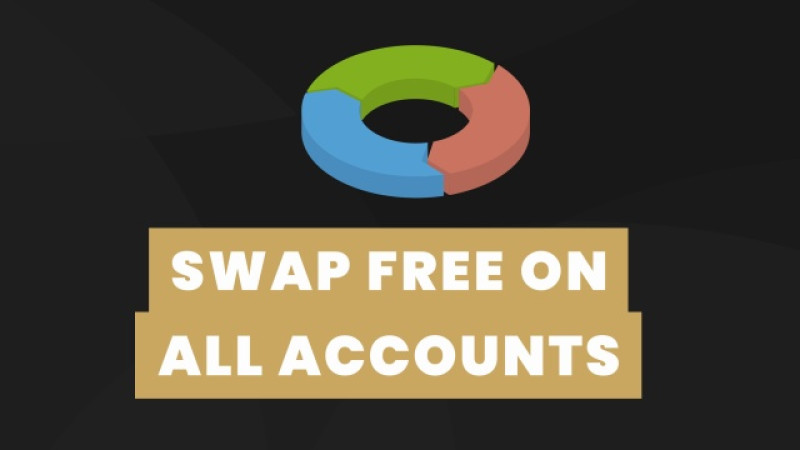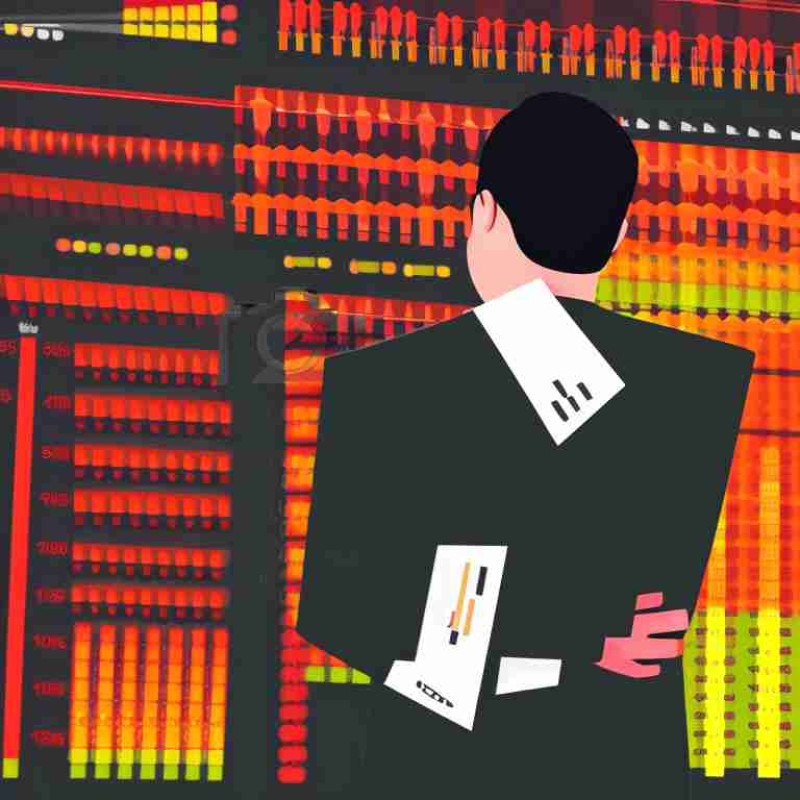
What Is Swap In Forex Trading?
Swap is a concept in forex trading that refers to the exchange of one currency for another with a simultaneous agreement to reverse the transaction at a later date. This is typically done overnight and is used to manage exposure to currency risk. In forex trading, the swap rate is the interest rate differential between the two currencies being traded, and it is applied as an adjustment to the value of a trade.
Swap is essentially a type of interest payment that is made between two parties as a result of a currency trade. The swap rate is determined by the difference in interest rates between the two currencies being traded, and it is calculated based on the size of the trade and the length of time the trade is held overnight.
In forex trading, swap can be either positive or negative, depending on the interest rate differential between the two currencies being traded. If the interest rate of the currency being sold is higher than the interest rate of the currency being bought, the swap will be positive, and the trader will receive a payment. On the other hand, if the interest rate of the currency being sold is lower than the interest rate of the currency being bought, the swap will be negative, and the trader will have to pay an amount.
In conclusion, swap is an important concept in forex trading that is used to manage exposure to currency risk. It is a type of interest payment that is made between two parties as a result of a currency trade and is calculated based on the size of the trade, the length of time the trade is held overnight, and the interest rate differential between the two currencies being traded.

Is Swap Better than Exchange?
The decision of whether swap is better than exchange depends on the individual trader's goals and trading strategies. Both swap and exchange have their own advantages and disadvantages and can be used for different purposes in forex trading.
Swap refers to the exchange of one currency for another with a simultaneous agreement to reverse the transaction at a later date. It is essentially a type of interest payment that is made between two parties as a result of a currency trade. In forex trading, swap can be either positive or negative, depending on the interest rate differential between the two currencies being traded.
Exchange, on the other hand, refers to the direct conversion of one currency into another without any simultaneous agreement to reverse the transaction. It is a straightforward transaction that is used to convert one currency into another for practical purposes, such as travel or business.
Swap is typically used by traders who wish to hold positions overnight, as it allows them to manage exposure to currency risk. It is also useful for traders who are looking to earn interest on their trades. On the other hand, exchange is typically used by individuals who need to convert one currency into another for practical purposes, such as travel or business.
In conclusion, both swap and exchange have their own advantages and disadvantages, and the decision of which one is better depends on the individual trader's goals and trading strategies. While swap is useful for managing exposure to currency risk and earning interest on trades, exchange is a straightforward transaction that is used for practical purposes. Traders should carefully consider their goals and strategies before deciding which option is better for them.
What Is a Swap Example?
A swap example in forex trading involves exchanging one currency for another with a simultaneous agreement to reverse the transaction at a later date. Let's consider a simple example to understand the concept of swap.
Suppose a trader buys 100,000 euros using US dollars. The trader holds the position overnight and is subject to the swap rate, which is determined by the difference in interest rates between the euro and the US dollar. If the interest rate of the euro is higher than the interest rate of the US dollar, the trader will receive a positive swap payment, and if the interest rate of the US dollar is higher than the interest rate of the euro, the trader will pay a negative swap amount.
For instance, if the interest rate of the euro is 1% and the interest rate of the US dollar is 0.5%, the trader will receive a positive swap payment of 0.5% on the 100,000 euros they have bought. This means that the trader will earn an additional $500 overnight on the trade, assuming the swap rate is calculated on an annual basis.
In this example, the trader has taken advantage of the difference in interest rates between the euro and the US dollar to earn additional income overnight. This is one of the benefits of using swap in forex trading.
In conclusion, a swap example in forex trading involves exchanging one currency for another with a simultaneous agreement to reverse the transaction at a later date. The swap rate is determined by the difference in interest rates between the two currencies being traded, and it can result in either a positive or negative payment, depending on the interest rate differential.

How Is Swap Calculated In Forex?
The calculation of swap in forex trading is based on the difference in interest rates between the two currencies being traded. In forex, swap is calculated as the difference between the interest earned or paid for holding a currency position overnight.
Here's how the calculation works:
Determine the interest rate differential: The swap rate is determined by the difference in interest rates between the two currencies being traded. For example, if the interest rate for the Euro is 1.5% and the interest rate for the US dollar is 1%, the interest rate differential is 0.5%.
Calculate the swap amount: The swap amount is calculated by multiplying the interest rate differential by the value of the trade and by the number of nights the position is held. For example, if the trader bought 100,000 Euros using US dollars, the swap amount would be (0.5% * 100,000 * 1) = $500, assuming the swap rate is calculated on an annual basis.
Determine the direction of the swap: The direction of the swap payment depends on the interest rate differential between the two currencies being traded. If the interest rate for the first currency is higher than the interest rate for the second currency, the trader will receive a positive swap payment. If the interest rate for the second currency is higher than the interest rate for the first currency, the trader will pay a negative swap amount.
In conclusion, the calculation of swap in forex trading is based on the difference in interest rates between the two currencies being traded. The swap amount is calculated by multiplying the interest rate differential by the value of the trade and by the number of nights the position is held. The direction of the swap payment depends on the interest rate differential between the two currencies being traded.
When Should You Not Use Swap?
Here are a few situations when you may not want to use swap in forex trading:
Short-Term Trading: If you are engaged in short-term trading and do not hold positions overnight, swap fees may not be relevant to you. By closing all positions before the rollover time, you can avoid paying or receiving any swap fees.
Religious Beliefs: If you have religious beliefs that prohibit earning or paying interest, swap fees may not be suitable for you. In this case, you may want to consider using a swap-free account.
Hedging Strategies: If you are using hedging strategies to reduce risk, swap fees may increase your overall trading costs and reduce the effectiveness of your strategy.
High Swap Fees: If the swap fees for a particular currency pair are high, it may not be profitable to trade that currency pair. In this case, you may want to consider switching to a different financial instrument with lower swap fees.
In conclusion, there are several situations where you may not want to use swap in forex trading, such as short-term trading, religious beliefs, hedging strategies, or high swap fees. By understanding these situations and taking appropriate measures, you can ensure that swap fees do not impact your forex trading negatively.
What Is Swap Free Accounts In Forex?
Swap-free accounts in forex trading are special trading accounts that are designed for traders who follow Islamic religious principles and do not want to earn or pay interest. In these accounts, the trader is not charged or credited any swap fees for holding a position overnight.
Swap-free accounts are also known as Islamic trading accounts, and they are offered by many forex brokers to cater to the needs of traders who follow Islamic beliefs. These accounts operate in accordance with Shariah law, which prohibits the earning or paying of interest, also known as riba.
With a swap-free account, traders can participate in forex trading without having to worry about violating their religious beliefs. They can hold positions for as long as they like, without incurring any swap fees. This can be especially beneficial for traders who like to hold positions for an extended period of time and do not want to be affected by fluctuating swap rates.
In conclusion, swap-free accounts in forex trading are designed for traders who follow Islamic religious principles and do not want to earn or pay interest. These accounts operate in accordance with Shariah law, allowing traders to participate in forex trading without violating their religious beliefs.

Is Swap Free Good In Forex?
Whether swap-free accounts are good in forex trading depends on the trader's individual circumstances and trading strategy. Here are a few points to consider:
Religious Beliefs: For traders who follow Islamic religious principles, swap-free accounts can be a good option as they allow them to participate in forex trading without violating their beliefs.
Trading Strategy: If a trader has a long-term trading strategy and plans to hold positions overnight, a swap-free account can be beneficial as they will not be charged or credited any swap fees.
Cost Savings: Swap fees can add up over time, especially for traders who hold positions for an extended period of time. With a swap-free account, traders can save money on swap fees, allowing them to maximize their profits.
Limited Options: Some forex brokers may offer limited options for trading with a swap-free account. For example, traders may not be able to access certain financial instruments or use certain trading strategies.
Trading Conditions: The trading conditions for swap-free accounts may be different from regular trading accounts. For example, the spread and commission charges may be higher for swap-free accounts.
In conclusion, whether swap-free accounts are good in forex trading depends on the trader's individual circumstances and trading strategy. While they can be beneficial for traders who follow Islamic beliefs or have a long-term trading strategy, they may also have some limitations and higher trading costs compared to regular trading accounts.
Is Swapping Better Than Trading?
Whether swapping is better than trading depends on several factors, including the trader's goals, risk tolerance, and trading strategy. Here are a few points to consider:
Goals: If the trader's goal is to earn interest, swapping may be a better option as it allows them to earn a steady income from holding a position overnight. On the other hand, if the trader's goal is to generate profits from price movements, trading may be a better option.
Risk Tolerance: Swapping involves earning or paying interest, which is a low-risk activity. On the other hand, trading involves buying and selling financial instruments, which is a higher-risk activity that can lead to both profits and losses.
Trading Strategy: If the trader's trading strategy involves holding positions overnight, swapping may be a better option as it allows them to earn interest from their overnight positions. On the other hand, if the trader's strategy involves quick trades that are closed within the same day, trading may be a better option.
Market Conditions: The market conditions can also play a role in determining whether swapping or trading is better. For example, in a market with low volatility, swapping may be a better option, while in a market with high volatility, trading may be more profitable.
In conclusion, whether swapping is better than trading depends on the trader's goals, risk tolerance, trading strategy, and market conditions. Both swapping and trading have their pros and cons, and traders should carefully consider their individual circumstances before deciding which approach is best for them.
How Do I Open a Swap Free Account?
Opening a swap-free account in forex trading is a simple process that involves the following steps:
Choose a Forex Broker: The first step is to choose a reputable forex broker that offers swap-free accounts. Research the broker's offerings, such as the financial instruments available for trading, the spread and commission charges, and the level of customer support provided.
Create an Account: Once you have chosen a broker, you can create an account by visiting the broker's website and filling out an online registration form. The form will ask for personal information, such as your name, address, and email address.
Verify Your Identity: To comply with anti-money laundering regulations, most forex brokers will require you to verify your identity. This may involve submitting a copy of your passport or national ID card and proof of address, such as a utility bill.
Fund Your Account: Once your identity has been verified, you can fund your account using a variety of methods, such as a bank transfer, credit card, or e-wallet.
Choose Swap-Free Option: When you are ready to start trading, you can choose the swap-free option in your trading account settings. This will ensure that you will not be charged or credited any swap fees for holding positions overnight.
In conclusion, opening a swap-free account in forex trading is a straightforward process that involves choosing a broker, creating an account, verifying your identity, funding your account, and choosing the swap-free option. By following these steps, you can participate in forex trading without having to worry about violating your religious beliefs or earning or paying interest.

Are Swap Rates Risk Free?
Swap rates are not entirely risk-free and can have an impact on a trader's profits and losses. Here are a few points to consider:
Interest Rate Risk: Swaps involve the exchange of interest rates between two parties. If interest rates change unexpectedly, this can impact the profitability of the swap, leading to losses for one or both parties.
Credit Risk: The credit risk is the risk of default by one of the parties involved in the swap. If a party defaults on its obligation, the other party may suffer losses.
Market Risk: The market risk is the risk that the value of the underlying asset or financial instrument used in the swap will change, leading to losses for one or both parties.
Liquidity Risk: The liquidity risk is the risk that one of the parties will be unable to meet its obligations due to a lack of available funds.
In conclusion, while swap rates may seem risk-free at first glance, they do carry a degree of risk that can impact a trader's profits and losses. Traders should carefully consider these risks and take appropriate measures to manage them, such as diversifying their portfolios and monitoring market conditions closely.
How Do I Avoid Swap Fees in Forex?
Avoiding swap fees in forex trading can be achieved in several ways:
Use a Swap-Free Account: Many forex brokers offer swap-free accounts, which do not charge or credit interest for holding positions overnight. This is an ideal option for traders who do not want to earn or pay interest for religious or other reasons.
Close Trades Before Rollover: Another way to avoid swap fees is to close all open trades before the rollover time, which is typically 5 PM EST. This ensures that you do not hold any positions overnight and avoid any swap fees.
Use a Different Financial Instrument: If you are trading a currency pair with high swap fees, consider switching to a different financial instrument, such as stocks, commodities, or indices, that may have lower swap fees or no swap fees at all.
Choose a Broker with Low Swap Fees: Some forex brokers offer lower swap fees than others, so be sure to compare the swap fees offered by different brokers before opening an account.
In conclusion, avoiding swap fees in forex trading can be achieved by using a swap-free account, closing trades before rollover, using a different financial instrument, or choosing a broker with low swap fees. By following these steps, you can trade in the forex market without having to pay high swap fees.





